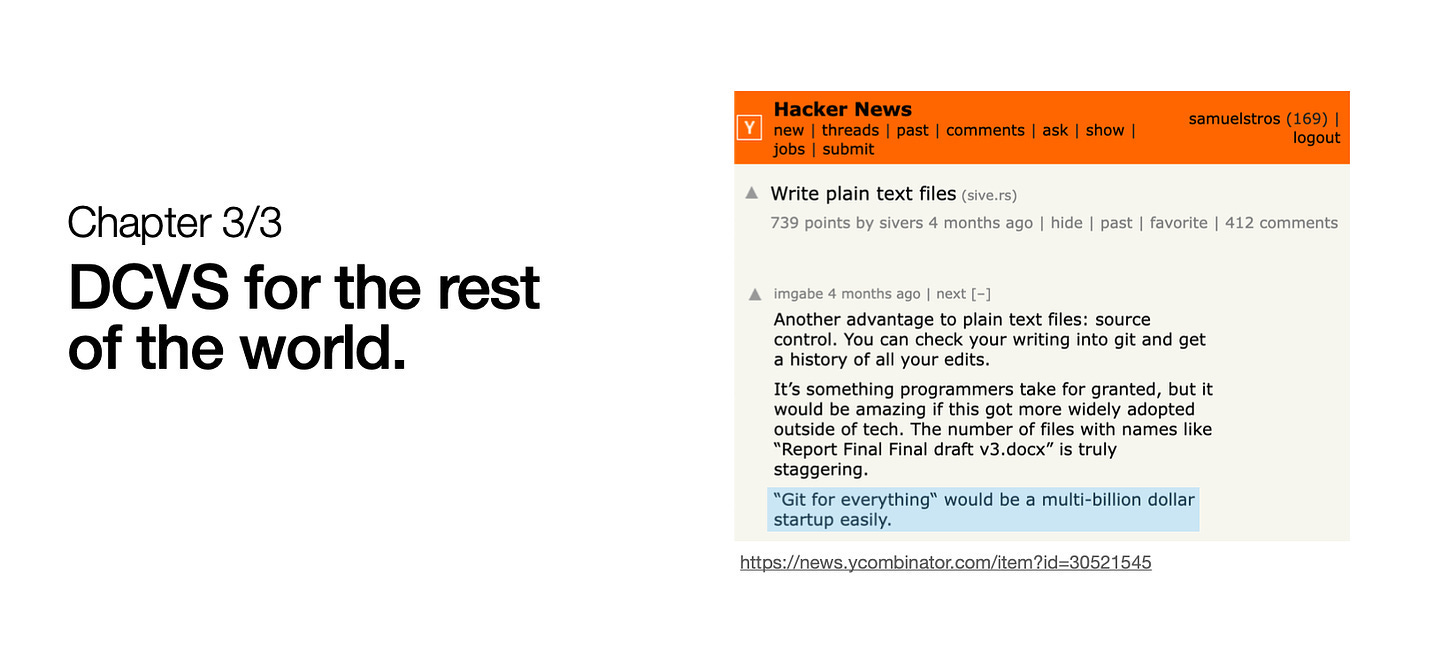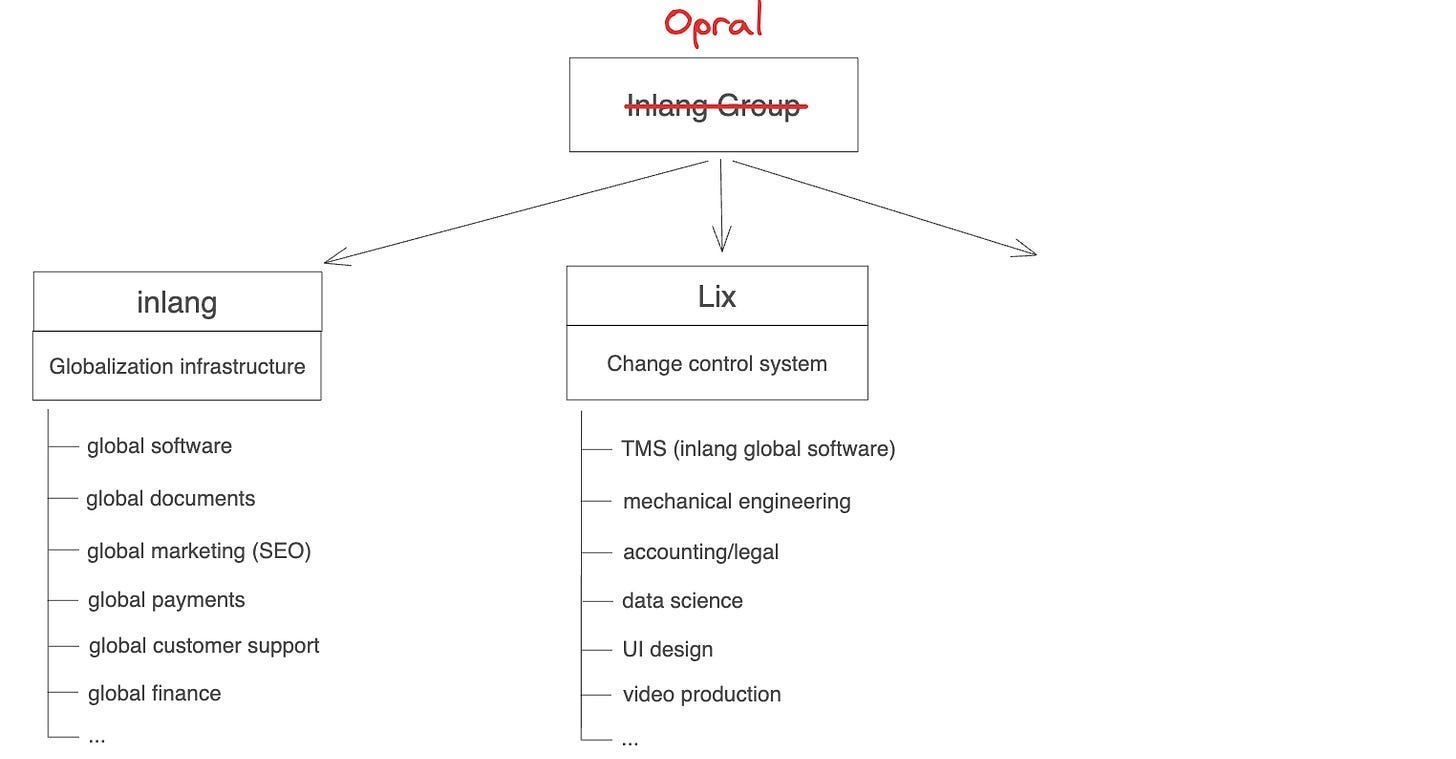Company State of -inlang- Opral 2023
Inlang and lix are on track! We ended 2023 with a stable company and product(s) foundation. Key milestones we achieved this year:
A core team.
A minimal version of an ecosystem that users love.
The relationship between inlang and lix is working.
Preface - It is all about expansion on a global scale
Burgers and beers in Amsterdam this year led to a significant clarification of what inlang is about:
Inlang’s ecosystem enables software companies to expand globally [with their app, website, marketing, payments, customer support, documentation, everything].
Previously, we communicated inlang around localization, which is the technically correct term. Replacing localization with globalization severely opened people’s eyes. Only a few people thought and think about growth, more customers, and revenue when they hear “localization”. Remarks like “Localization sounds niche” were frequent. Compare the following two sentences:
Inlang makes localization simple.
Inlang makes globalization simple.
Everyone knows that globalization is huge. Every company wants to expand to new markets, acquire more customers, and generate more revenue. The hundred billion-dollar question is: Will inlang’s ecosystem [that is powered by lix] make global expansion simple (enough)?
Milestones
A team
A large milestone for any startup. Inlang ended 2023 with a killer core team. Skilled, motivated, independent, and fast-paced.
To Felix, Niklas, Nils, Jan, Flo, Jannes, and Loris:
Inlang ist ein no-brainer. Lix ein Moonshot welcher durch Inlang geformt, gepusht und dadurch auf Erfolgslinie gebracht wird. Ich fress nen Besen, wenn es anders kommt.

A minimal ecosystem that users love
What we are building is hard. Really hard. We are a diverse set of problems with a new approach for distributed cross-team collaboration (lix). Never heard of distributed cross-team collaboration? I described the term here.
Despite all the technical challenges we face (which turn into product limitations), user feedback is overwhelmingly positive, and word of mouth is starting to unfold.

Inlang’s and Lix’s relationship is working
Lix is inlang’s backend. To build inlang, we need to build lix. Furthermore, we will offer lix to other companies. Simple.
Articulating the relationship between inlang and lix was not so simple in 2022. The “inlang and lix enable parallel cross-team collaboration” presentation from 2022 contains an important quote and challenge at minute 7:26:
“[…] Requirements. The biggest challenge is to have the [lix] SDK […] enable different teams to collaborate together […] without building a team-specific solution […that will eventually fail to achieve our vision].”
The quote is convoluted. Lix was ambiguous in 2022 and, to a degree, is still ambiguous. You likely wonder: What even is lix, and why are we calling it a “change control system”? I will write more memos about lix and change control in the upcoming months.
For now, I can report that inlang’s multi-team (translators, designers, developers) and multi-app ecosystem yields the correct requirements to fulfill our vision for lix.
Last but not least: Say hello to Opral
We start 2024 with the elimination of a recurring problem:
“I work at inlang.”
”What does inlang do?”
”Inlang is two companies/products […continues with a confusing pitch].”
From January onwards, we will incrementally change the company name to Opral and thereby reflect our multi-product offering:
“I work at Opral.”
”What does Opral do?”
”We have two products. Inlang and lix. Inlang makes globalization simple by using lix as its backend. Lix is our own infrastructure product that we will externalize in the future.”







